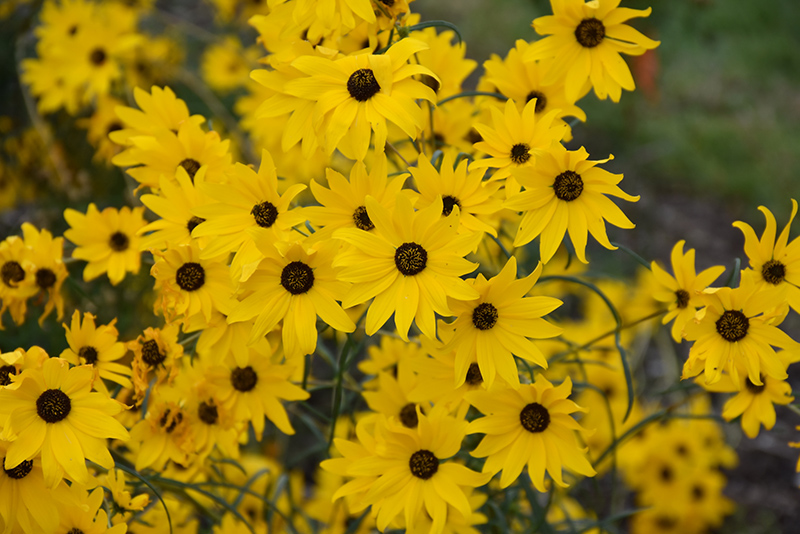Gold Lace Narrow-leaved Sunflower
Description
An upright, clumping native variety, producing plentiful, golden-yellow daisy-like blooms, above fine foliage on strong stems; heat and salt tolerant; excellent for sunny spaces; use in borders, naturalized areas, or along streams and ponds
Landscape Attributes
Gold Lace Narrow-leaved Sunflower is an herbaceous perennial with an upright spreading habit of growth. Its relatively fine texture sets it apart from other garden plants with less refined foliage.
Gold Lace Narrow-leaved Sunflower is recommended for the following landscape applications;
Planting & Growing
Gold Lace Narrow-leaved Sunflower will grow to be about 6 feet tall at maturity extending to 8 feet tall with the flowers, with a spread of 8 feet. It grows at a fast rate, and under ideal conditions can be expected to live for approximately 10 years. As an herbaceous perennial, this plant will usually die back to the crown each winter, and will regrow from the base each spring. Be careful not to disturb the crown in late winter when it may not be readily seen!
This plant does best in full sun to partial shade. It is quite adaptable, prefering to grow in average to wet conditions, and will even tolerate some standing water. It is not particular as to soil type, but has a definite preference for acidic soils, and is able to handle environmental salt. It is highly tolerant of urban pollution and will even thrive in inner city environments. This is a selection of a native North American species.; however, as a cultivated variety, be aware that it may be subject to certain restrictions or prohibitions on propagation.
Gold Lace Narrow-leaved Sunflower is a fine choice for the garden, but it is also a good selection for planting in outdoor pots and containers. With its upright habit of growth, it is best suited for use as a 'thriller' in the 'spiller-thriller-filler' container combination; plant it near the center of the pot, surrounded by smaller plants and those that spill over the edges. It is even sizeable enough that it can be grown alone in a suitable container. Note that when growing plants in outdoor containers and baskets, they may require more frequent waterings than they would in the yard or garden. Be aware that in our climate, this plant may be too tender to survive the winter if left outdoors in a container. Contact our experts for more information on how to protect it over the winter months.

